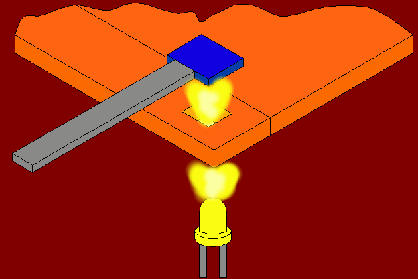Floppy Drives
|
|
The floppy drive used in the vast majority of today's P.Cs is the 1.44 MB (about a million and a half bytes of capacity) or the 3.5 inch floppy, appropriately named because it fits in an opening 3.5 inches wide. The floppy drive has two purposes, the first being that it is the only way to load software into your P.C to make use of the hard drive or CD drive when the P.C is first built. Second it serves as an easy way to transfer small amounts of data from one computer to another, or simply to make a copy for safekeeping, a floppy disk costs pennies and can be carried around in a shirt pocket.
|
|
The floppy drive has a couple of down sides, exchange of �infected� floppies may still be the most common way of transmitting computer viruses, and they can loose their information if exposed to a strong magnetic field. The major role that floppies once played in software distribution has been replaced by CD-ROM, and by CD-RW in data transfer.
|
|
Once the floppy disk is inserted into the drive an array of levers actuate; one lever opens the metal shutter to expose the cookie. The cookie is a thin mylar disk coated on either side with a magnetic material. Other leavers move the two read/write heads so that they only very slightly touch either side of the cookie.
|
A motor beneath the disk then engages a notch on the hub of the disk, this motor then spins the disc at speeds of around 360 rpm. The read/write heads are moved via a stepper motor, this motor moves the read/write heads back and fourth over the exposed cookie. The read/write process involves magnetic fields and electrical impulses, as a beginner you do not need to know this information.
|
|
Something we've all come across with floppy disks is the write protection tab. This is located at the bottom left hand corner of the disc and determines whether you can or cant write data to the disc, depending whether the tab is open or closed. The workings of this might prove interesting to some of you. When the disc is inserted one of the first things the drive circuit board does is to check whether light is visible through the write protection window. If the window is open and a beam from a light emitting diode can be detected on a photo sensitive diode on the opposite side of the disk, the drive then knows that the disk is write protected. But if no light is detected the disk is not write protected. This process is shown below.
|
|












